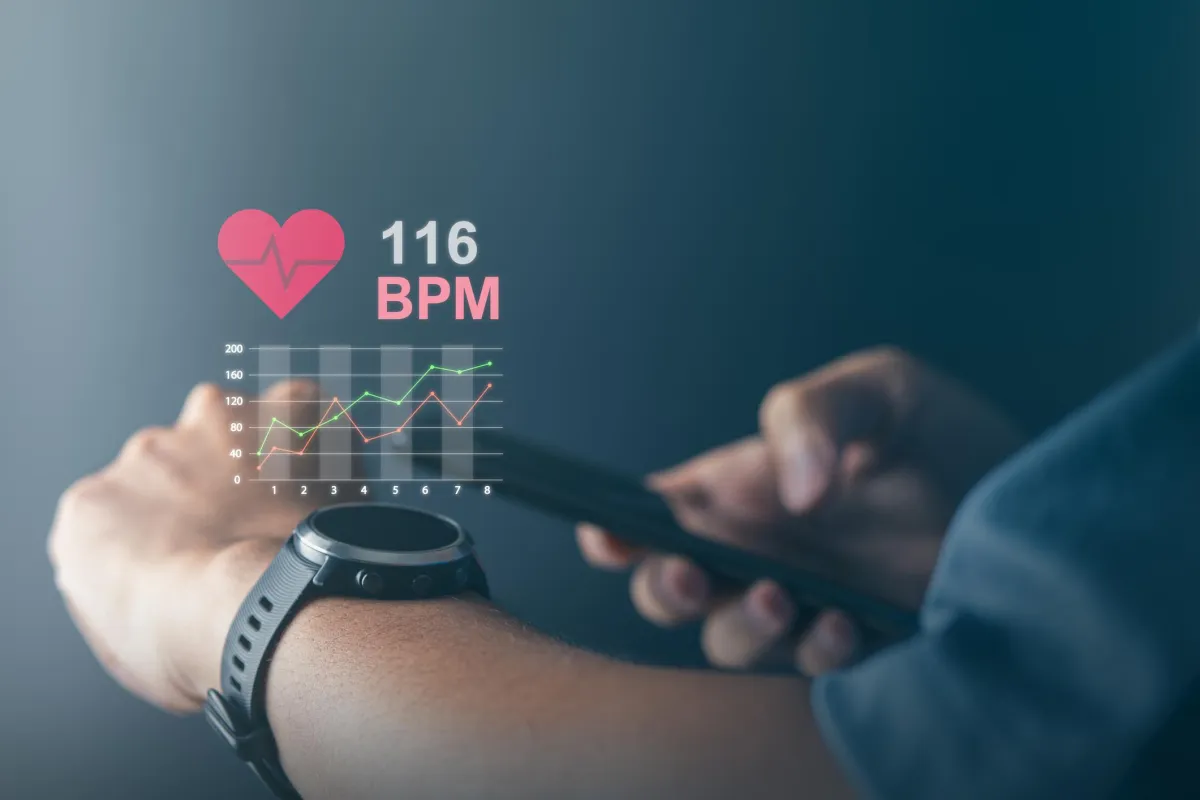More than training. It's an Edge.

Are You Training Smart Or Just Hard? How Tech Is Changing the Game for Athletes
Training hard is only half the equation. Today’s smartest athletes are using technology to train smarter—tracking what matters, adjusting before injuries hit, and getting more out of each session without burning out.
If you're not leveraging tech to support your performance, you're leaving progress—and potentially your health—on the table. Here’s what smart, tech-guided training looks like, what you should expect from your coaching, and how to take charge of your own development.
1. Nutrition, Sleep & HRV – Know When to Push or Pull Back
Many athletes feel tired and assume they’re overtraining—but often, the real issue is undertraining combined with poor sleep and inconsistent nutrition. The body isn’t overworked—it’s under-fuelled, under-recovered, and underprepared.
Athletes should set a minimum weekly training standard—and use data like sleep, nutrition, and HRV tracking to identify when to push intensity, add extra sessions, or back off. The goal isn’t just to avoid fatigue—it’s to maximise opportunity when the body is ready.
Track this:
Nutrition intake (energy, protein, hydration)
Sleep quality & quantity
Resting heart rate
HRV (Heart Rate Variability)
Why it matters:
Understand when you’re actually ready to push harder
Avoid wasting high-readiness days with low-effort sessions
Prevent burnout by spotting early red flags in recovery and fuelling
Ensure you’re eating enough to support your training load
Without it, you miss chances to train harder when your body is primed—and risk pushing through fatigue when it’s not.
Quick Tip:
Create a non-negotiable training minimum—e.g. 3–4 quality sessions/week. Then use recovery and nutrition data to identify days where you can safely push harder. Let readiness guide your extras—not emotion.
2. Speed, Movement & Load Tracking – Precision Beats Guesswork
Tools to consider:
GPS tracking for on-field data
Sprint testing with resistance or timing tools
Movement analysis through video or wearable data
Why it matters:
See your actual sprint speeds and acceleration curve
Identify mechanical inefficiencies in how you move
Ensure you're getting enough exposure to high-speed running
Without this, athletes either undertrain critical qualities like max velocity—or overdo it and risk soft-tissue injuries.
Quick Tip:
If you’re training for speed, you need to be sprinting at 90%+ effort consistently—but also managing how often. Tech helps you walk that line.
3. Force Plates & Jump Testing – Find What You Can’t Feel
Tools to consider:
Force plates for vertical jump, landing mechanics, and asymmetry testing
Why it matters:
It's not just about jump height—landing quality and force output matter
Detects imbalances and patterns that may lead to injury
Helps identify your movement signature, showing your unique strengths and preferences
Guides exercise selection based on how you naturally produce force
When training matches your movement signature, results accelerate.
✅ Case Study Highlight: A professional AFL athlete improved jump performance and sprint speed by 20–40% in just 6 weeks by matching exercises to their movement preferences and refining technique based on sprint mechanics. The right cues and programming unlocked better performance without increasing volume—just smarter, targeted work.
Without this, many issues go unnoticed until performance drops or injuries happen—and athletes end up on cookie-cutter programs that don’t match how they move best.
Quick Tip:
Even without force plates, video your jumps in slow motion. Look for differences in landing control and symmetry. Those patterns tell a story.
4. VBT (Velocity-Based Training) – Smarter Gym Work
Tools to consider:
Bar speed trackers to monitor velocity in lifts
Why it matters:
Adjust loads in real time based on how your body is responding
Match speed and intent to specific goals: power, strength, or speed-strength
Avoid heavy lifts on days your nervous system isn’t ready
Without VBT, training is based on guesswork or habit—not data.
Quick Tip:
If bar speed drops significantly between reps, you're either too fatigued or the load is too heavy. Back off to maintain quality.
5. Recovery Tools – Build Your Body Back Up
Tools worth considering:
Compression boots
Cold water immersion or contrast therapy
Mobility and soft tissue work
Sleep & HRV tracking
Recovery isn't just downtime—it's where your adaptations happen. Smart athletes track recovery like they track training.
Without recovery strategies, you hit a ceiling—no matter how hard you train.
Quick Tip:
Plan recovery like a workout. One dedicated session a week—focused on low-intensity movement, mobility, and decompression—can extend your peak weeks and reduce injury risk.
6. Data-Guided Coaching – What You Should Expect
Athletes deserve more than just motivation and reps. A modern training environment should:
Use data to guide programming, not guesswork
Individualise plans based on strength, movement, speed, and recovery data
Adjust intensity and focus week to week depending on how your body is responding
Educate you on why certain things matter—not just what to do
Without this, you’re likely spinning your wheels—missing progress, and increasing risk.
Quick Tip:
Ask your coach how they know you’re improving. If they can’t point to clear tracking or testing data, it may be time to raise the standard.
Final Takeaways
✅ Most athletes are undertraining—not overtraining. But they're also under sleeping and under-recovering.
✅ Start by tracking nutrition, sleep, and HRV to guide when to push and when to recover.
✅ Use data to personalise your plan and capture key opportunities to train harder when your body is ready.
✅ Expect your coach to measure, adjust, and educate based on what matters—not just effort.
The right technology won’t replace good coaching—but it will help you train with purpose, recover with intention, and perform at your best when it matters most.
Bonus Freebie
Want to use AI tools to support your training, recovery, and nutrition?
💬 [Click here to get your free ChatGPT prompt bundle for athletes]
Make tech your edge, not your excuse.
→ Link here ←
STAY CONNECTED
QUICK LINKS
GYM HEADQUARTERS
© Athlete’s Edge Albury – All Rights Reserved